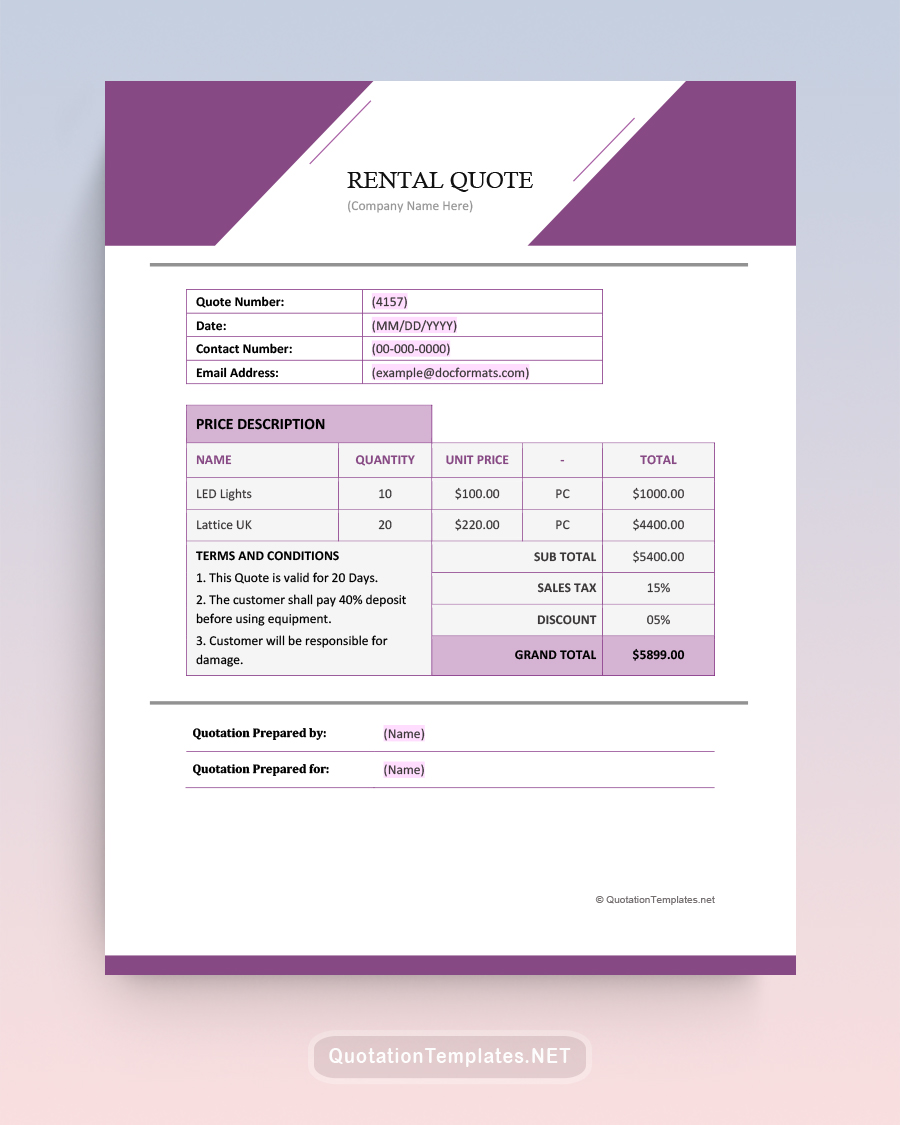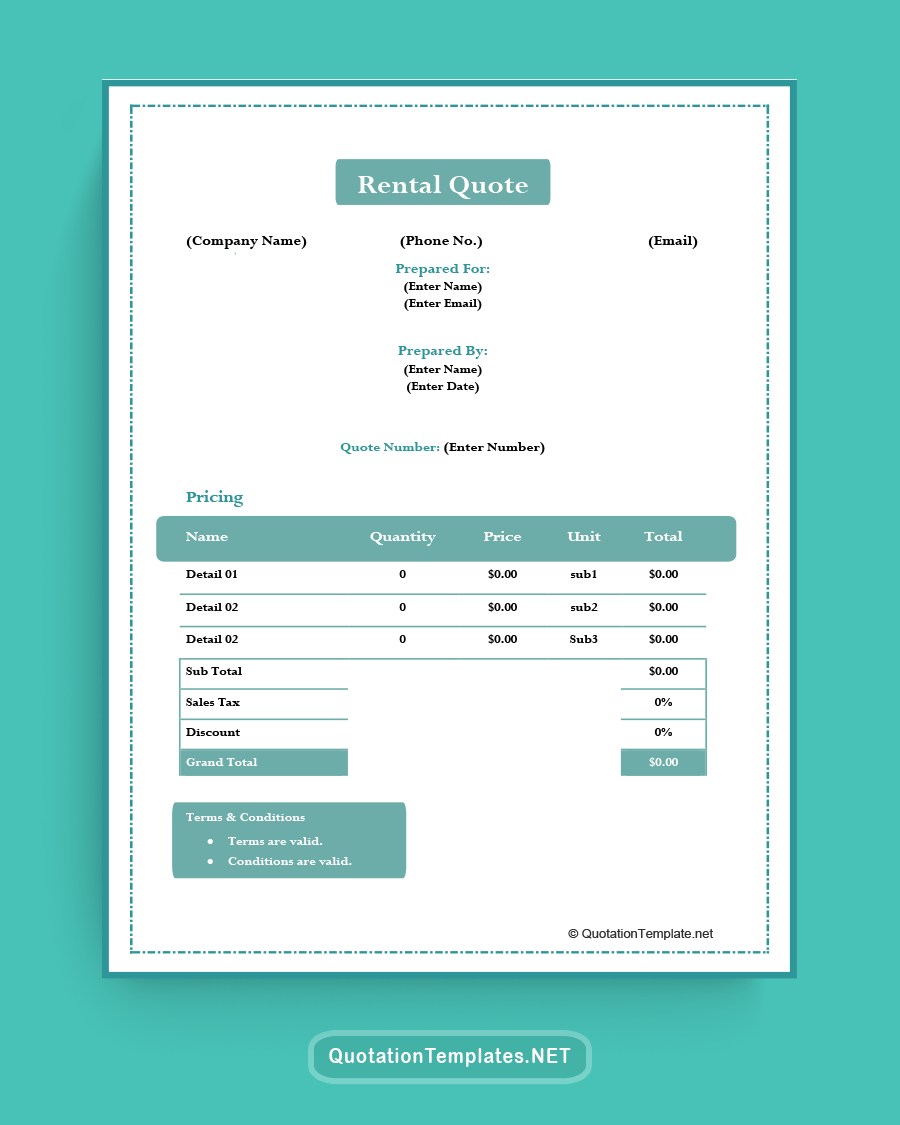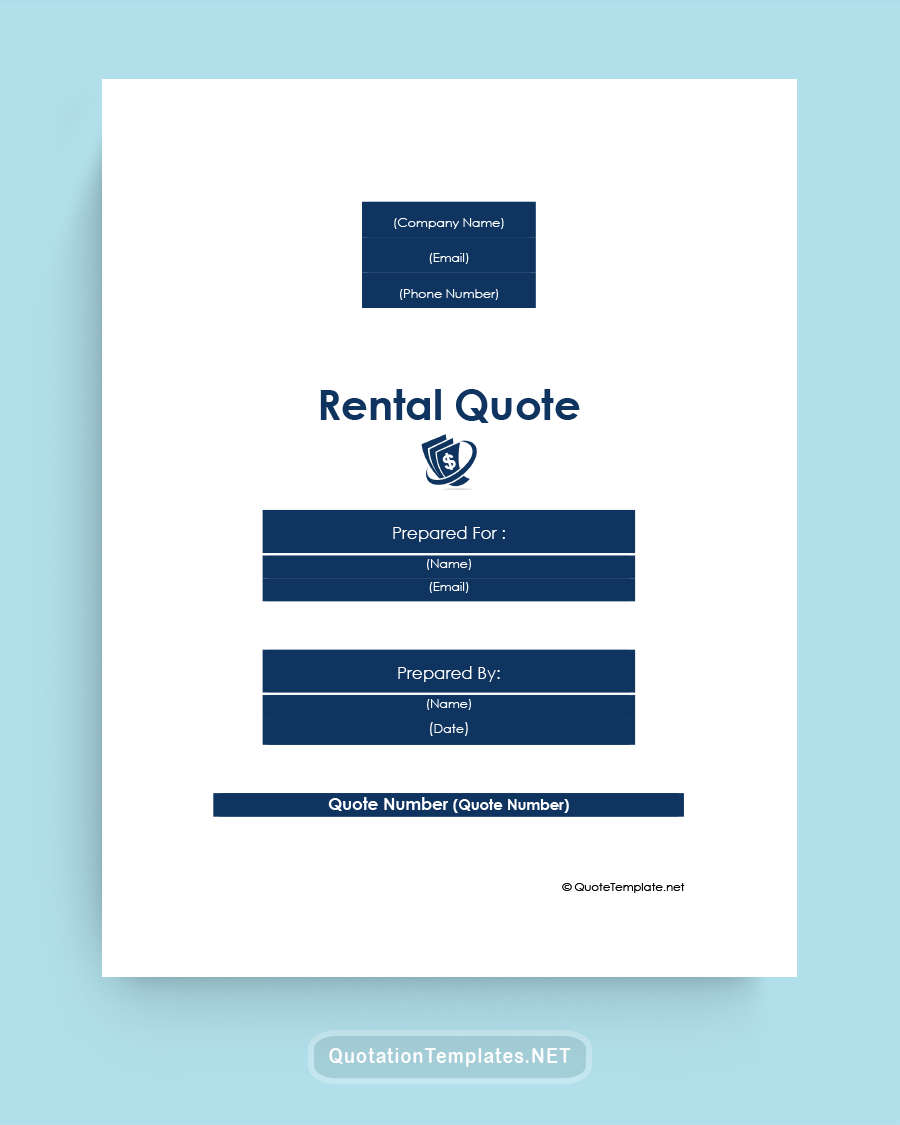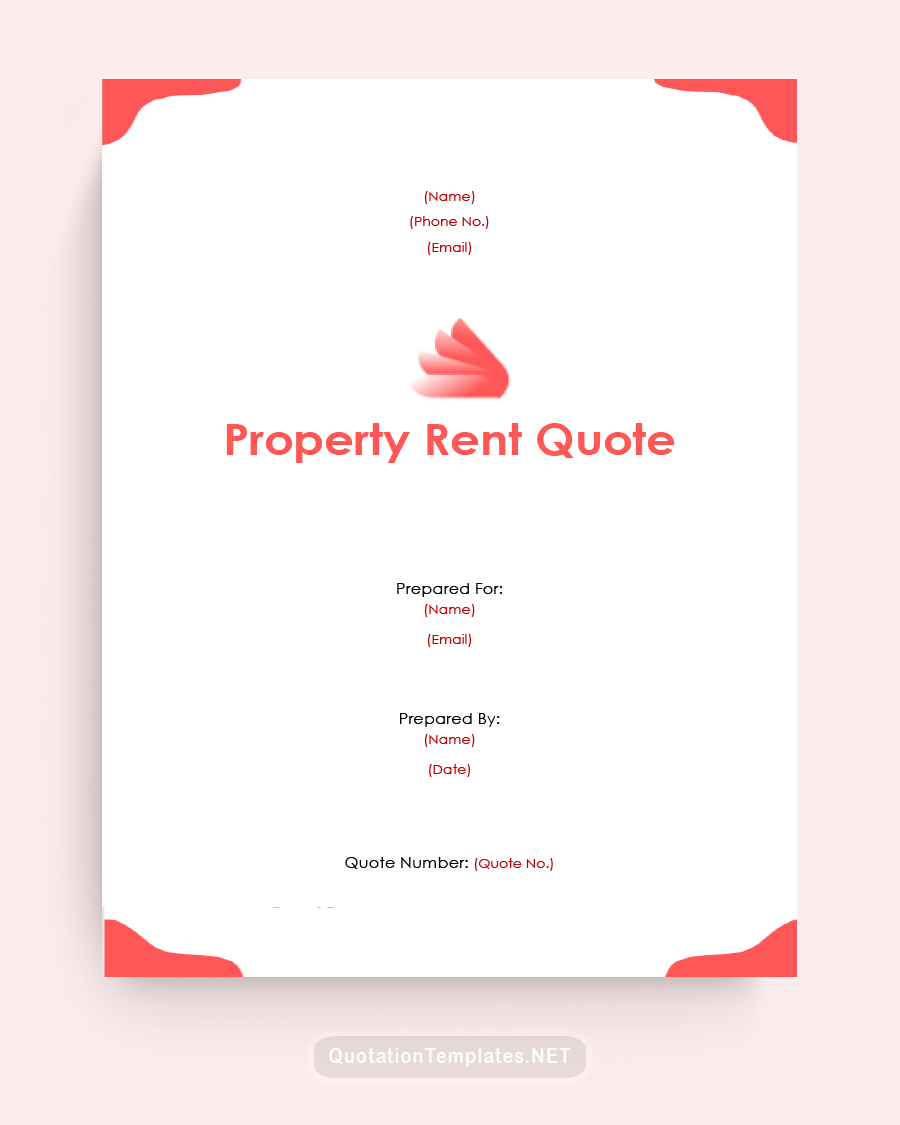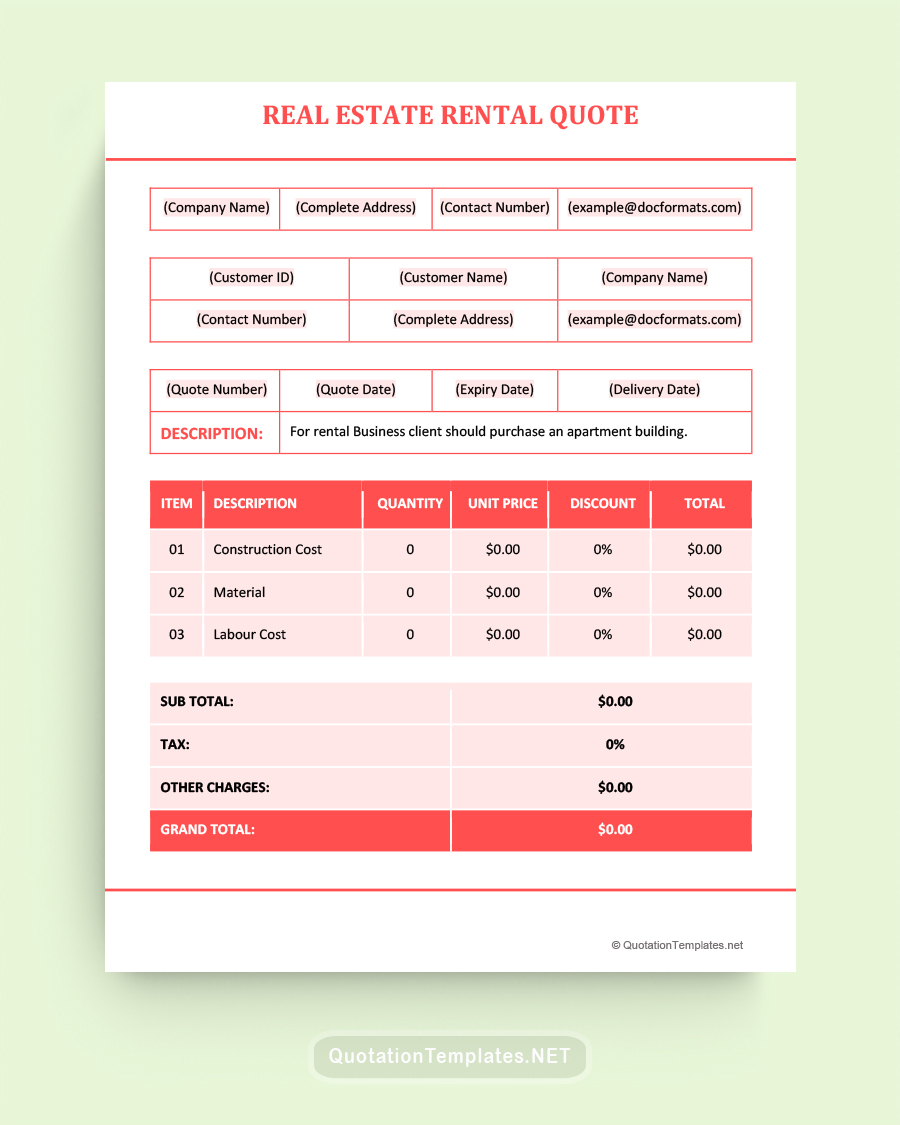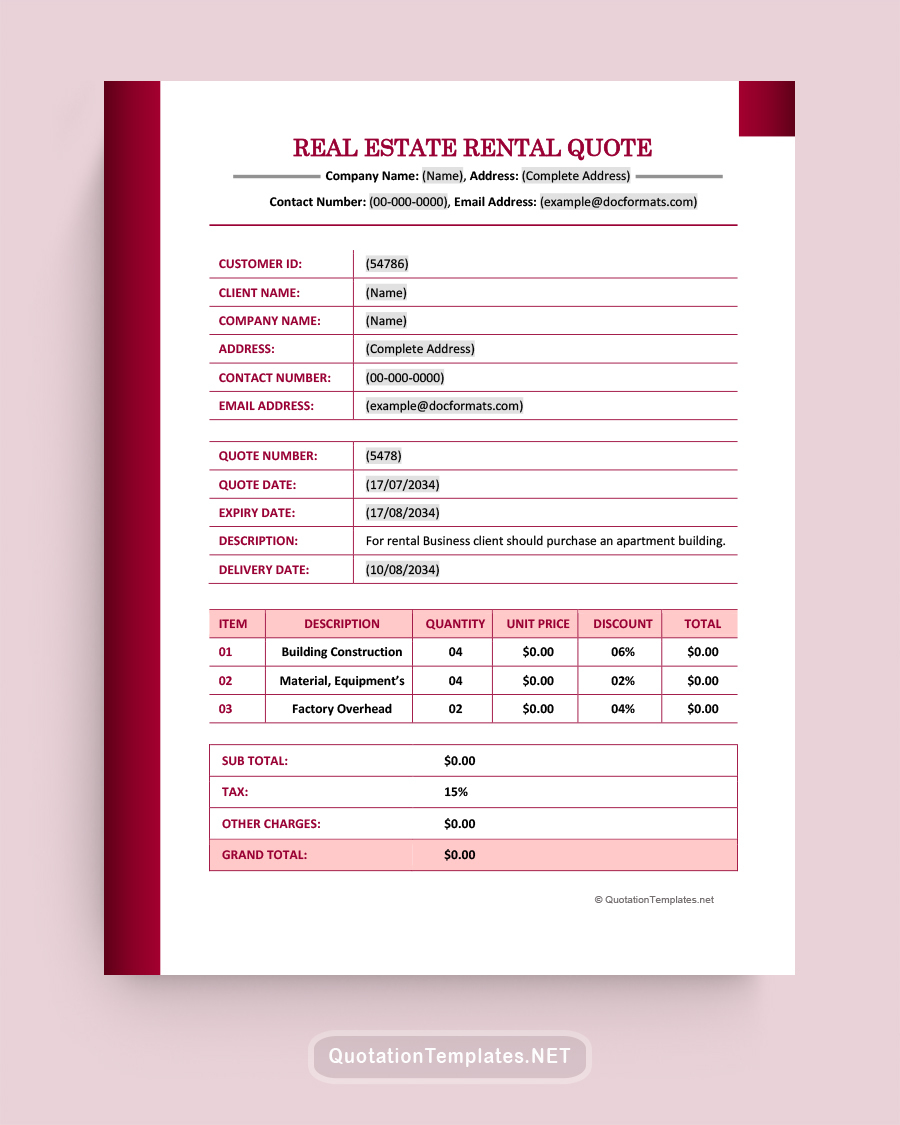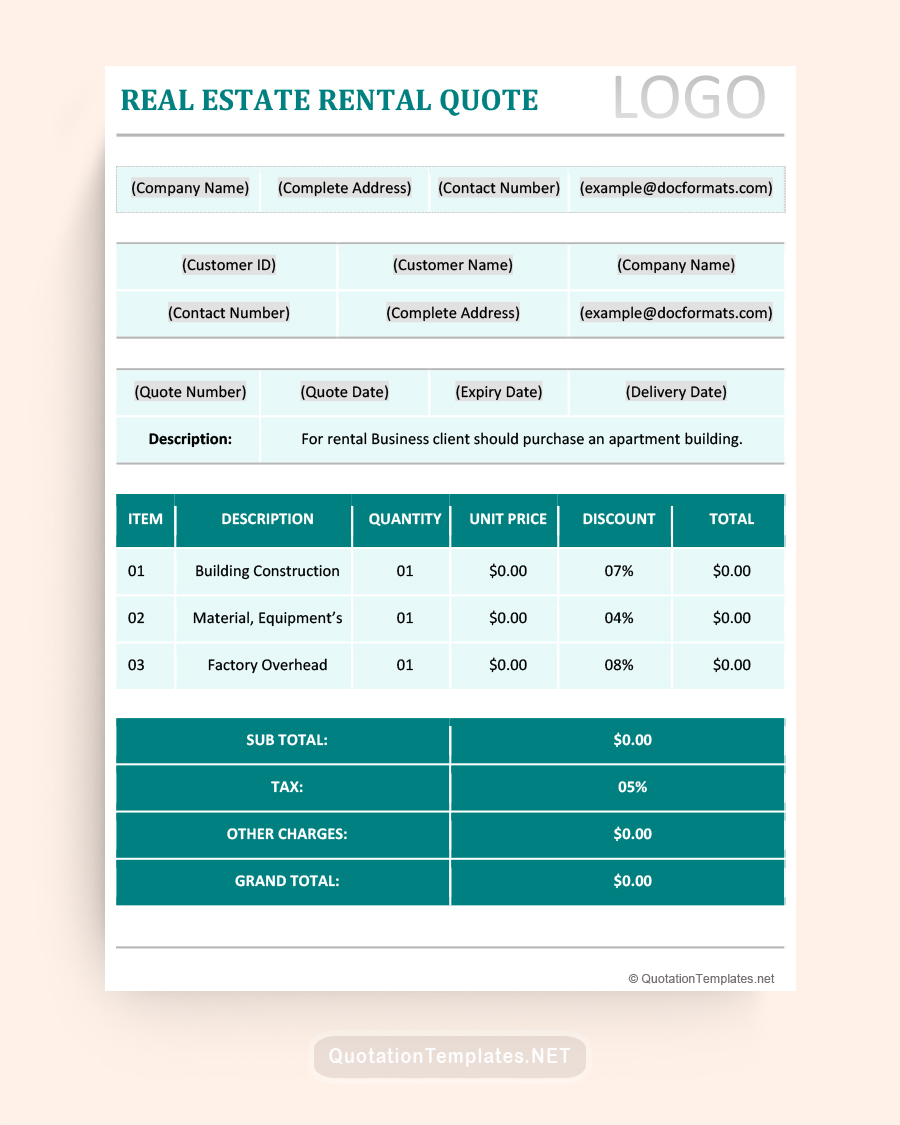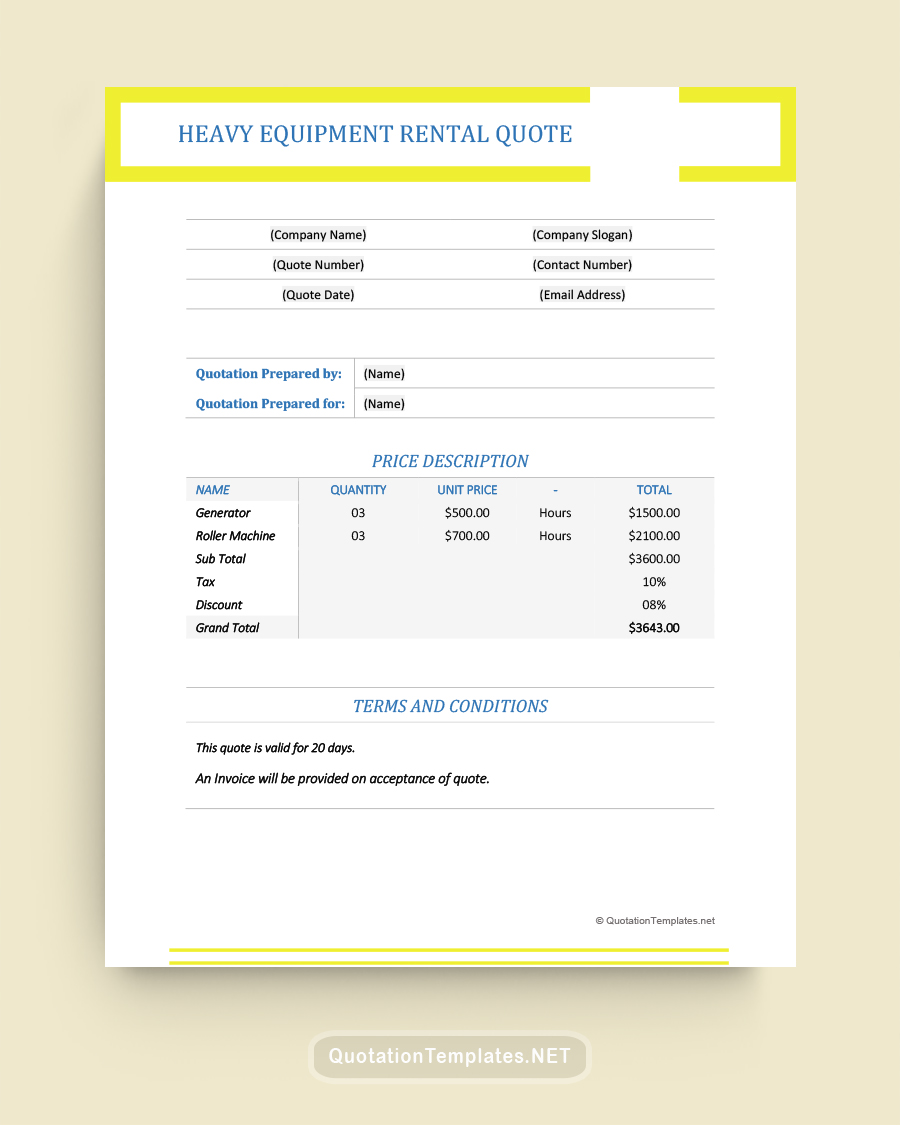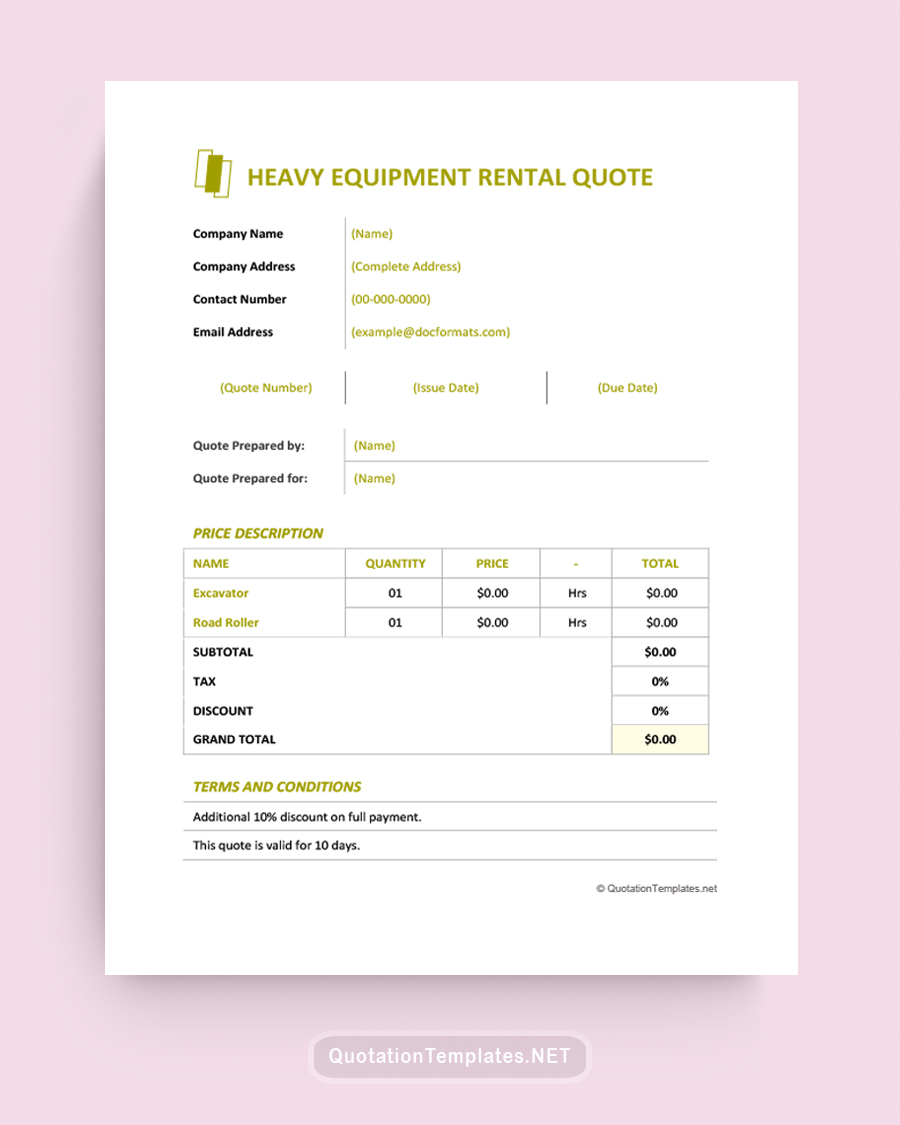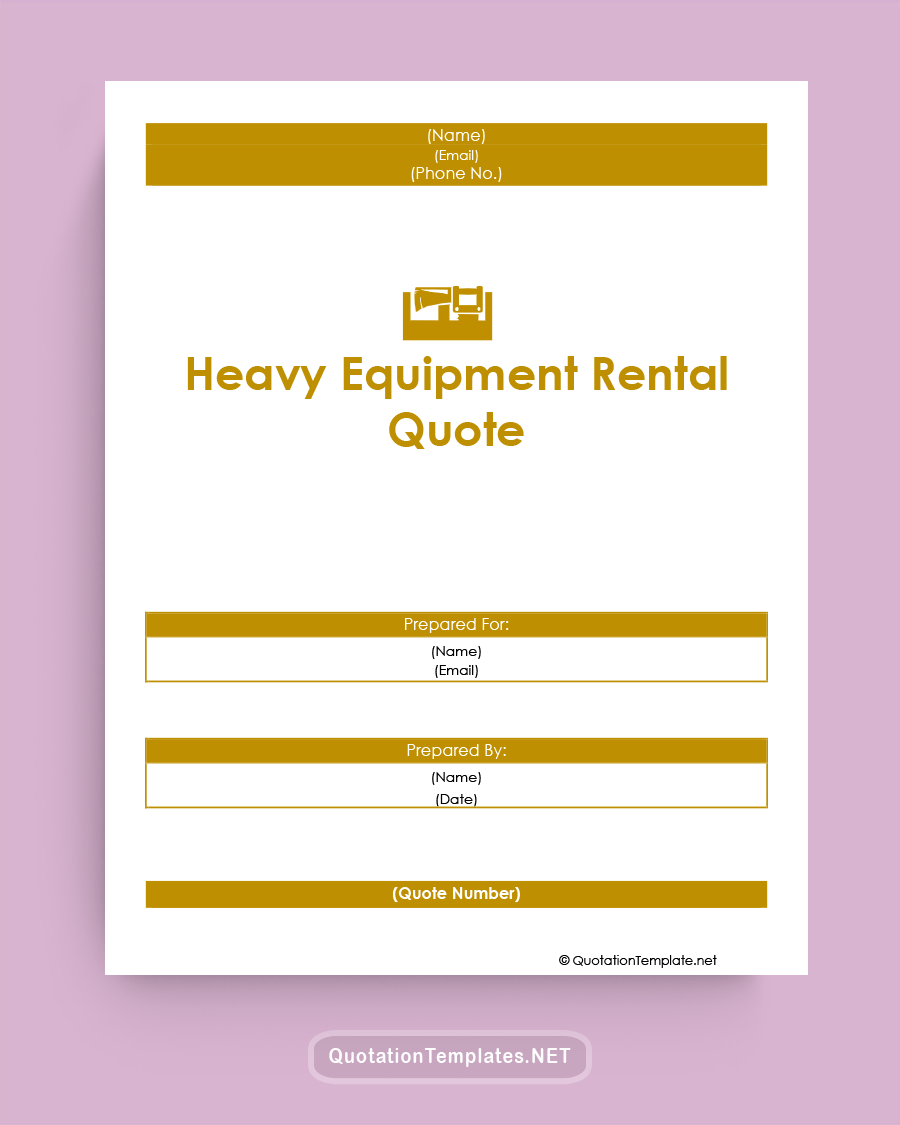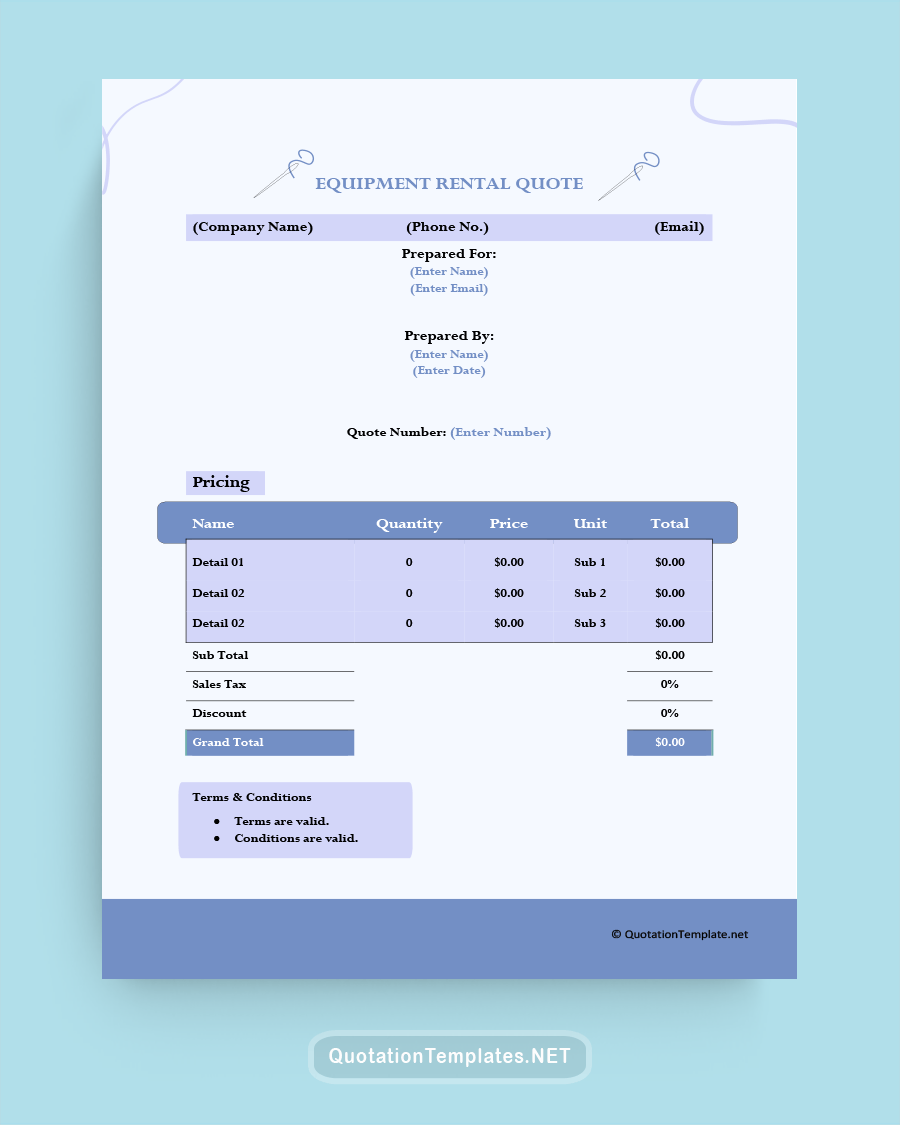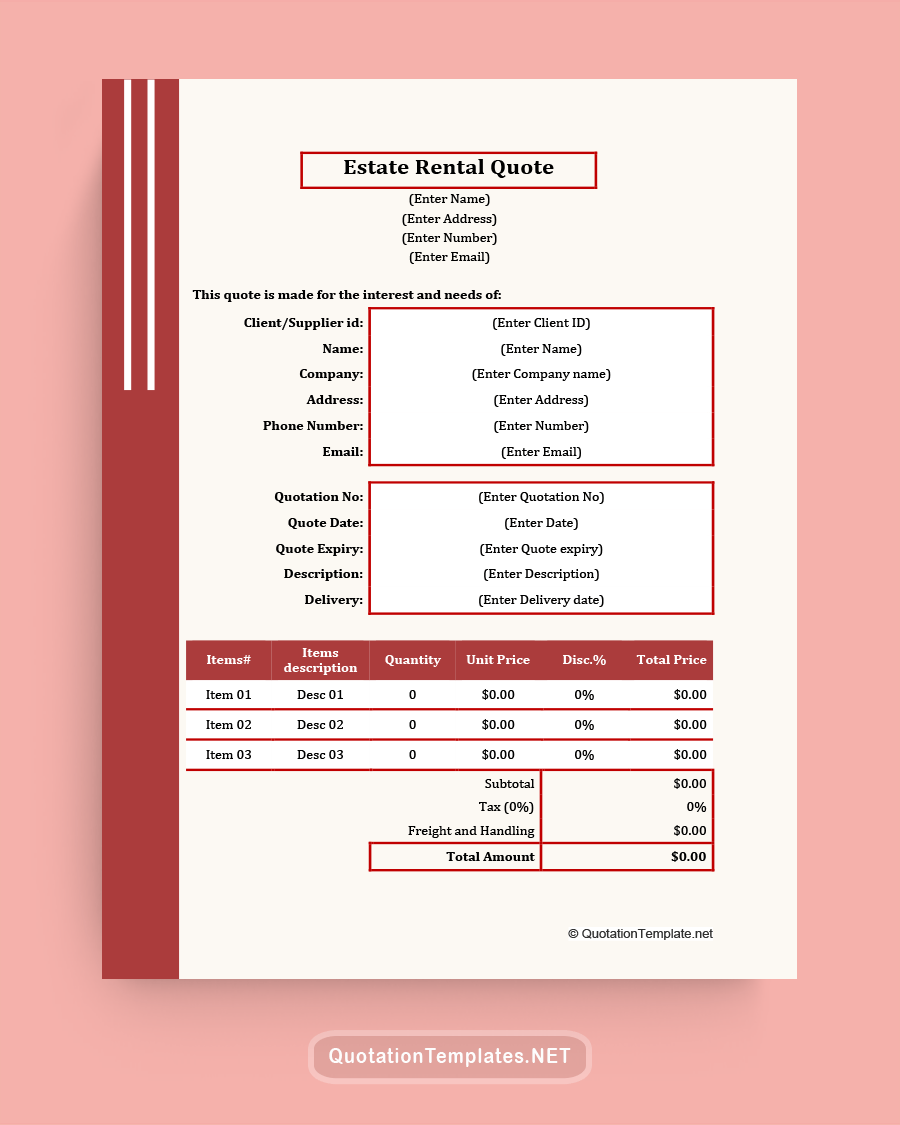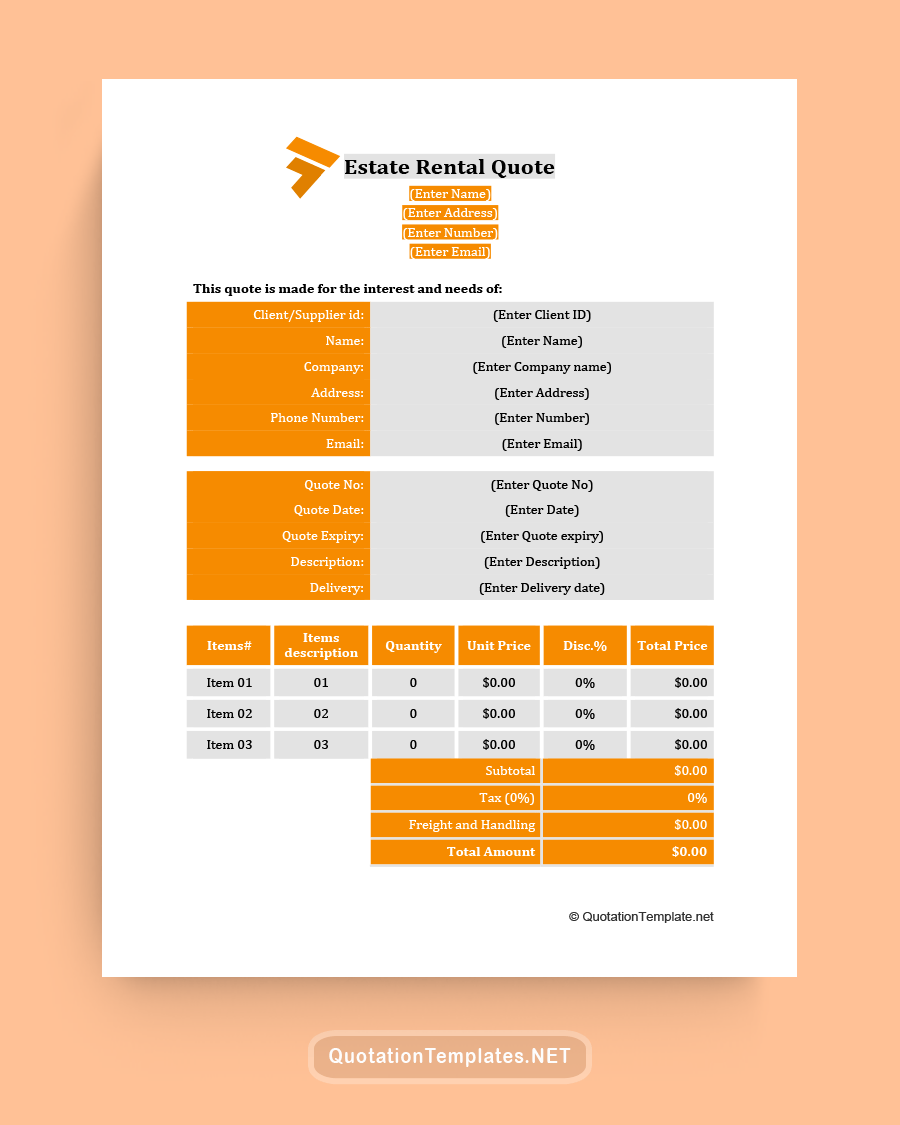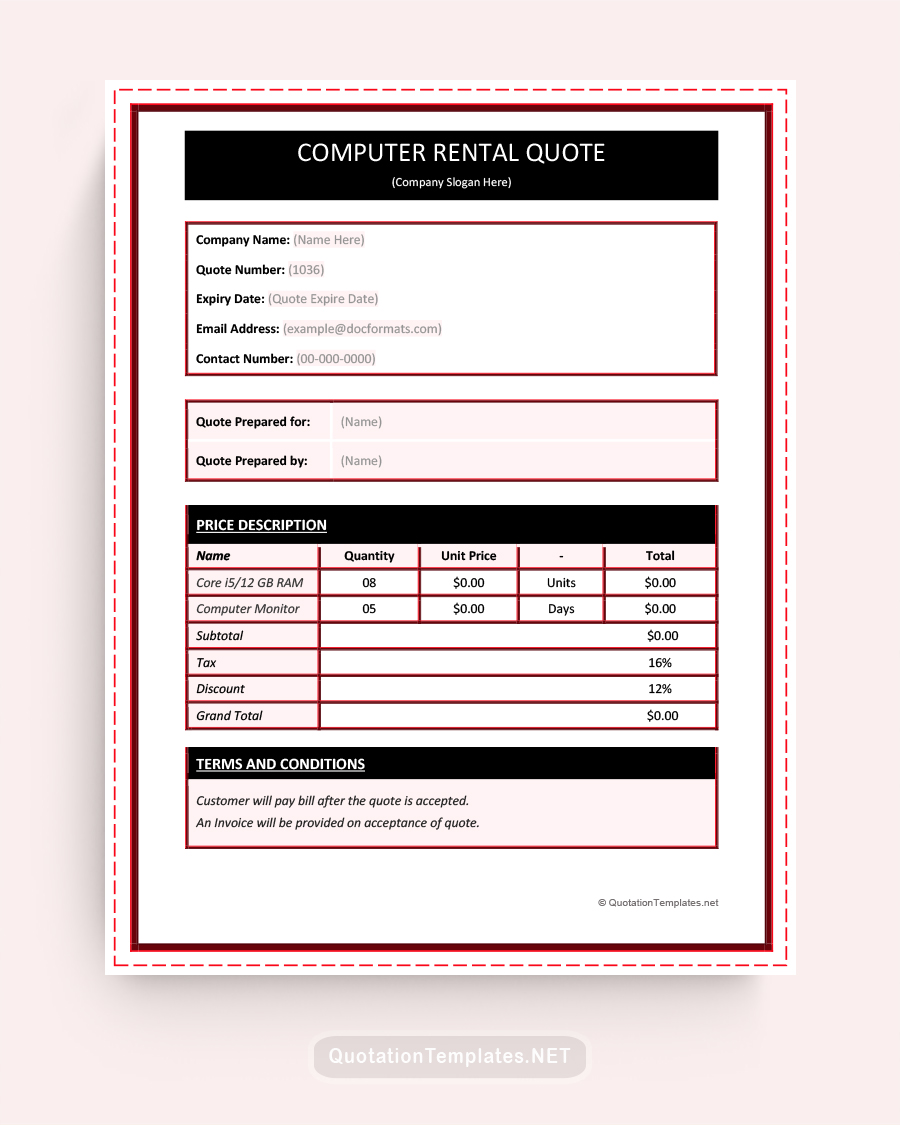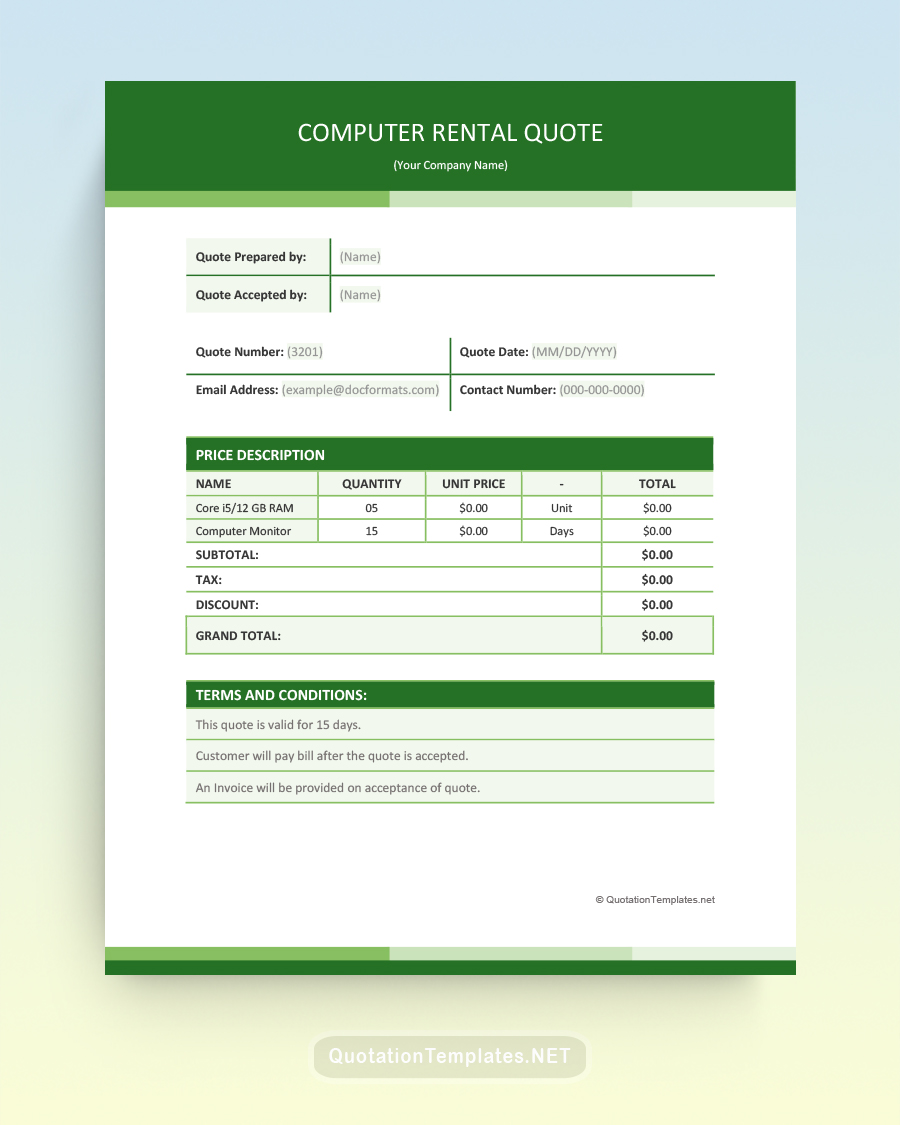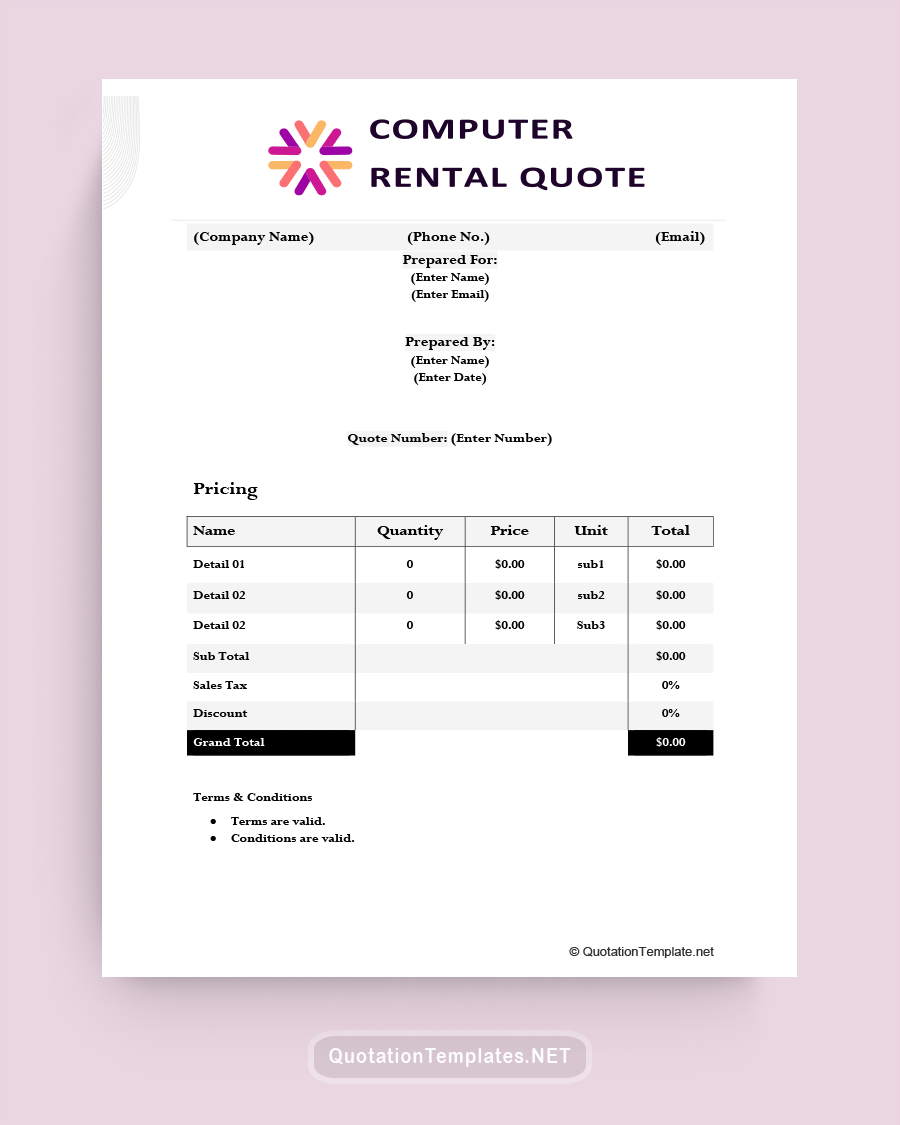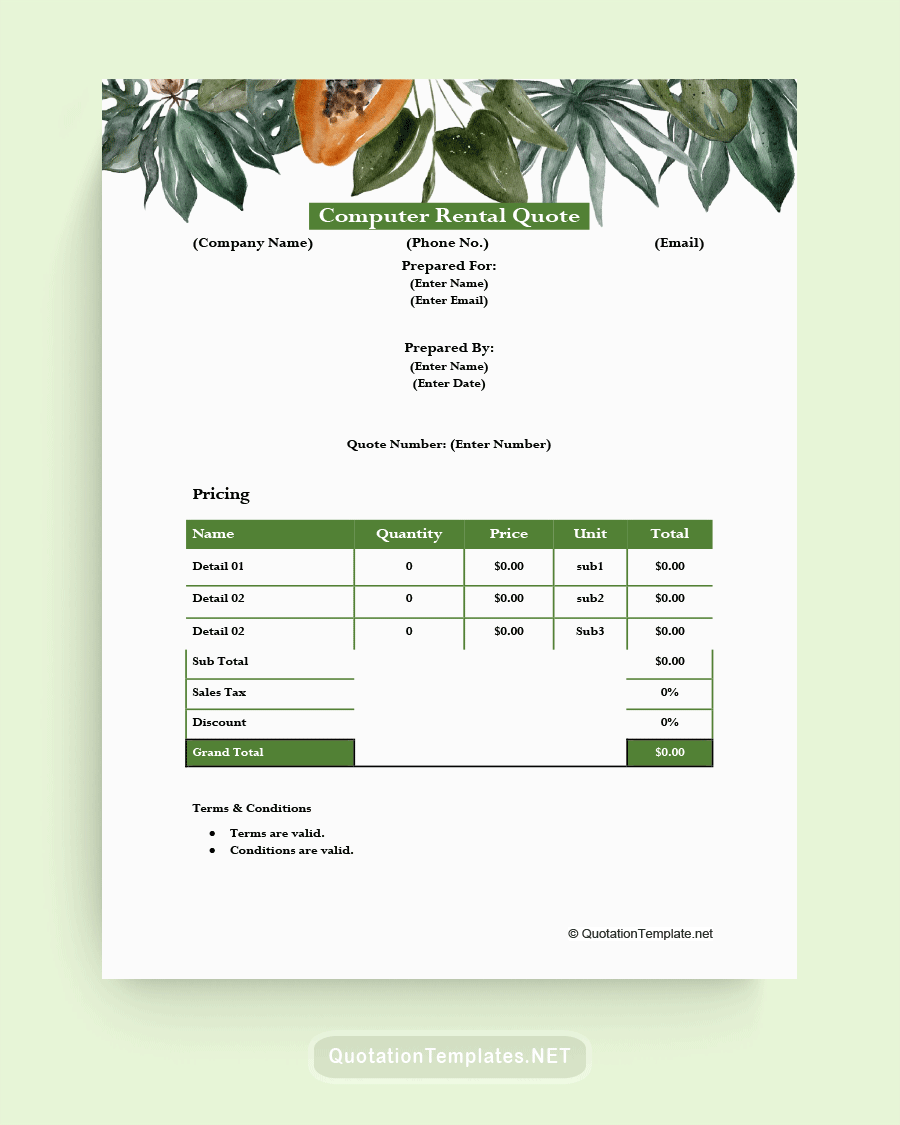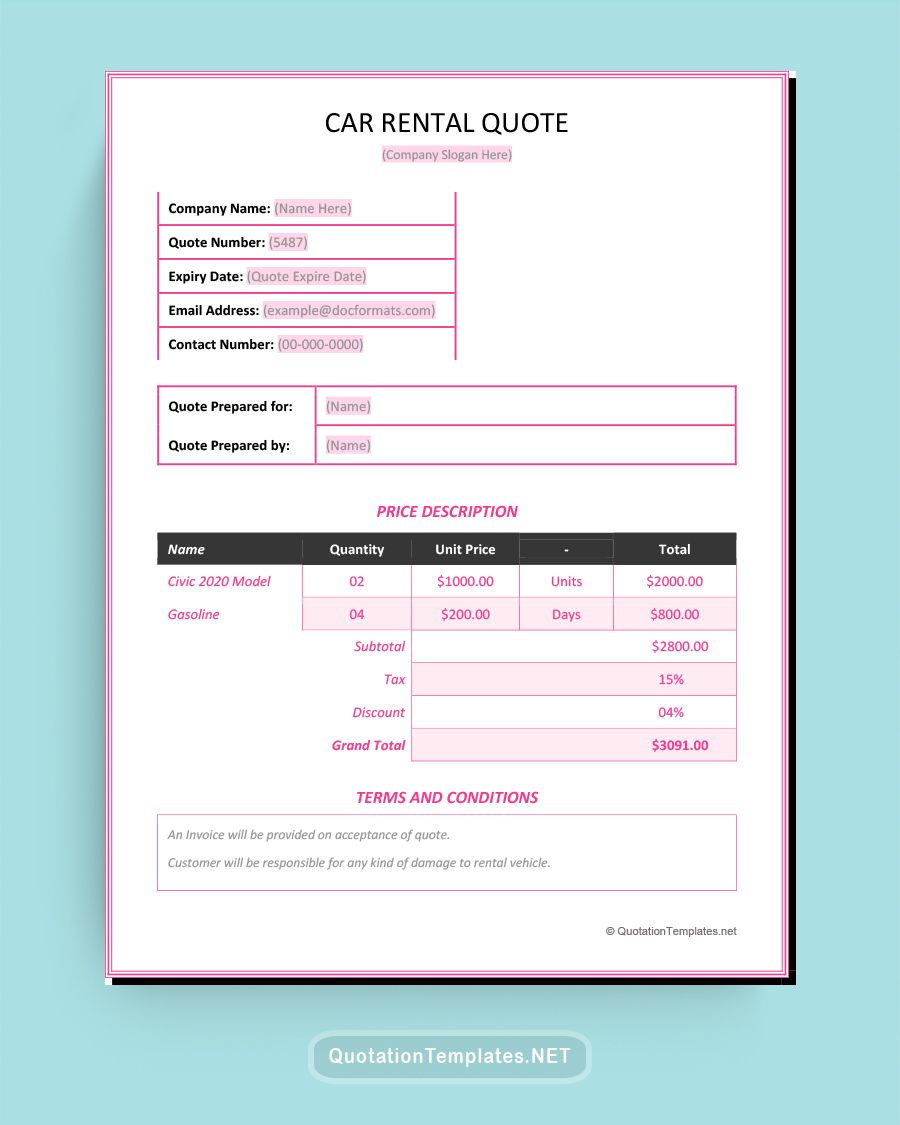Rental Quote Templates
With the advent of the internet, arranging overseas travel yourself became easy for most people. In fact, spending hours, days, and weeks researching your trip is part of the fun of a vacation for many of us. However, there are plenty of people who have neither the time, the skills, nor the inclination, to be their own travel agent. They want someone else to put together the perfect package for them, purpose-built to their taste. These aren’t people who will be contented to buy a vacation package straight off the shelf. They are interested in the details of their trip, but they just don’t want to bother to organize them for themselves.
What Is a Rental Quote?
A rental quote is a formal document offered to a potential renter identifying the item or property they wish to rent and the associated costs. It usually describes the article being rented, the rent amount, the period covered by the rent amount, the preferred mode of payment, and the contact details of the renter and article owner. Essentially, the document informs the potential renter of the terms of renting before they can decide whether or not to go through with the deal.
What Is a Rental Quote Template?
A rental quote template is a guide document prepared in the format of a rental quote. It contains generic and customizable details that you can adjust and change to create a quote that suits your company and clients. Where necessary, you can also add specific information like a description of the rental article and contact details of the renter.
Essential Elements of a Rental Quote Template
There is no statutory or standard rental quote template that you must use to create a rental quote. Nonetheless, your document will be more effective if it contains all information pertinent to the deal. This includes the following key elements:
- Date and Quote Number: The quote date is the day you send the quote to the client. Typically, it is the current date. The quote number identifies the current quote in relation to previous or future quotes.
- Logo and Letterhead: These items are optional but adding them increases your brand’s visibility. It also provides your contact information, so interested clients can reach you and makes the quote more credible.
- Owner’s Details: If you have a letterhead, you may not need to include your company details. If not, indicate the company name, address, and contact information.
- Renter’s Details: If available, enter the renter’s details into the quote. This includes their name, physical address, email address, and phone number.
- Article Description: This is a brief description of the equipment, item, or property being rented. It should identify the article enough so the renter does not get any surprises after agreeing to the deal.
- Prices: These are the associated rental costs of renting the described article. It should include an itemized list of individual costs – utilities, safety deposit, etc. – and a total price.
- Rental Period: This element defines the rental period represented by the deal you are offering.
- Payment Method and Date: You can also mention how and when you wish to get paid for the rented article.
- Terms and Conditions: This section sets any additional terms for the deal. For example, should the renter be a resident of your state to qualify for the deal?
- Validity Period: This is the period within which the quote is valid.
- Notes: Any additional information you think is important.
How to Write
With a professional template, it should take you a few minutes to prepare a quote, send it to your client, and possibly get approval to go ahead with the deal. Start by downloading a customizable Rental Quote Template in PDF, Excel, or Word and opening the document. You can then take the following steps to create a rental quote for a potential renter:
- Step 1: The template is likely labeled ‘quotation.’ You can keep this title or change it to ‘proposal’ or ‘estimate.’
- Step 2: Insert your company letterhead and logo to the top of the document. This will help the client identify your company and make the quote more credible.
- Step 3: Enter the current date as the quote date or the date of when you plan to send the quote to the potential renter.
- Step 4: Give the document a quote number that follows the sequence used in previous quotes. If this is your first quote, you can number it something like 001A.
- Step 5: Briefly describe the item, equipment, or property you are renting out. If it is an apartment, for instance, you can enter the address, the number of rooms, square feet, etc.
- Step 6: Define the rental period and enter a rental amount. You can also set the payment terms, including a pay-by date and preferred payment method.
- Step 7: Supply a validity period for the quote.
When you are done, go through the rental quote and add any details you think are necessary. If you are satisfied with the final copy, save it and send it to the client.
Conclusion
Providing potential renters with a rental quote is good practice because it helps them understand your rental terms. There is no legal requirement mandating you send it, but doing so can increase your brand’s reputation with renters. Rather than create this document from scratch whenever someone inquires about your rental property or equipment, you can use a Rental Quote Template. A template is easy and fast to customize and streamlines your quoting process, saving you and the renter a lot of time.
